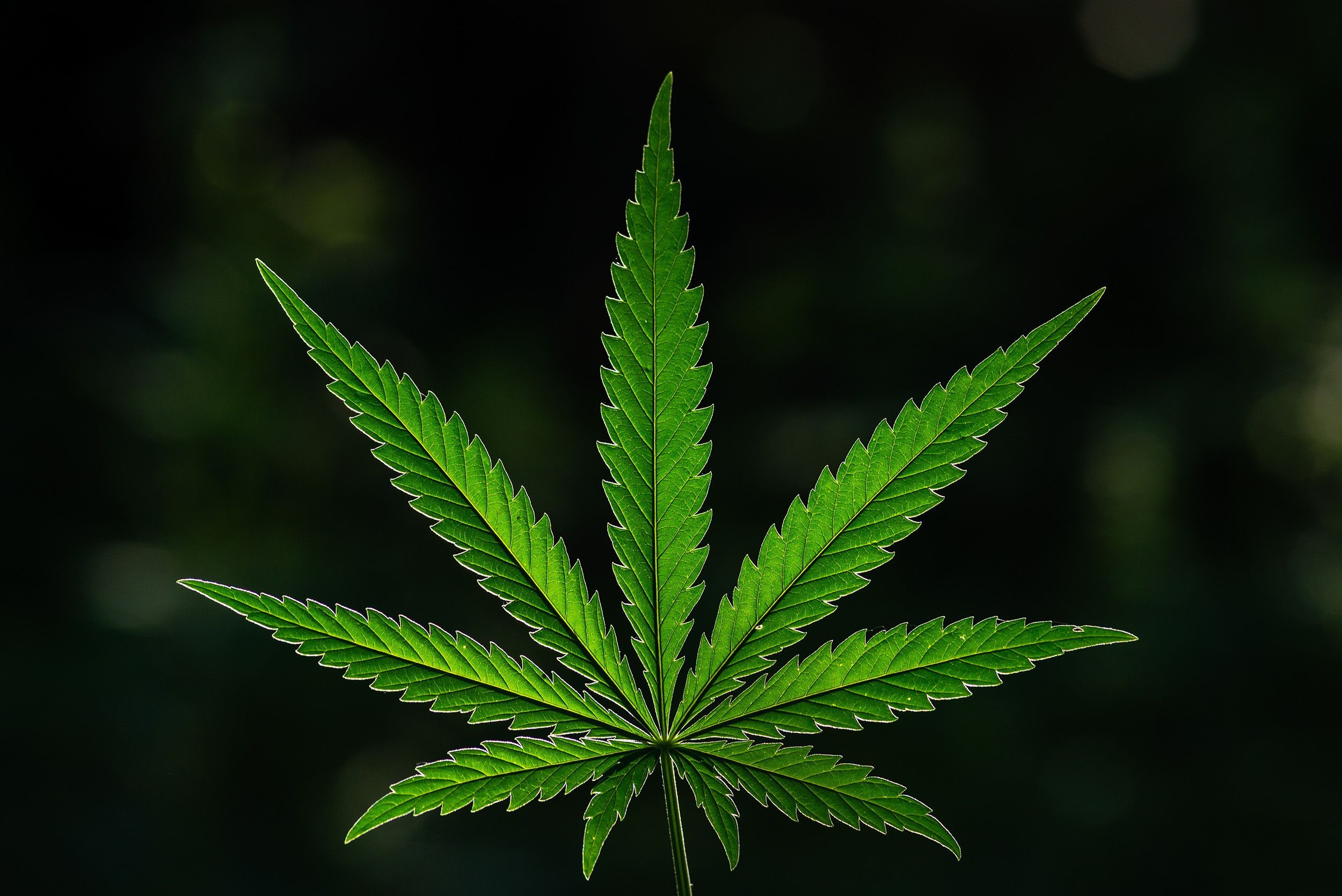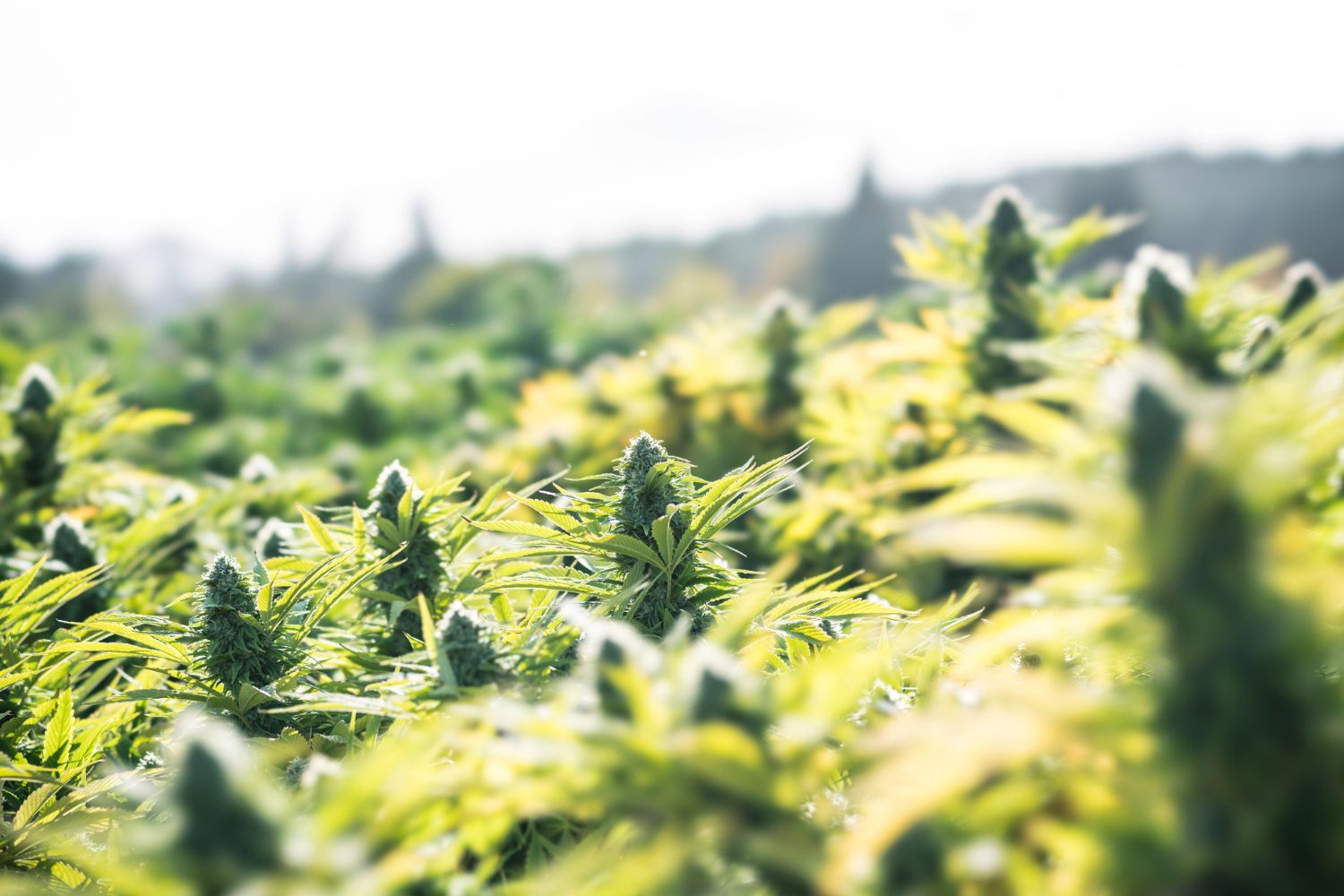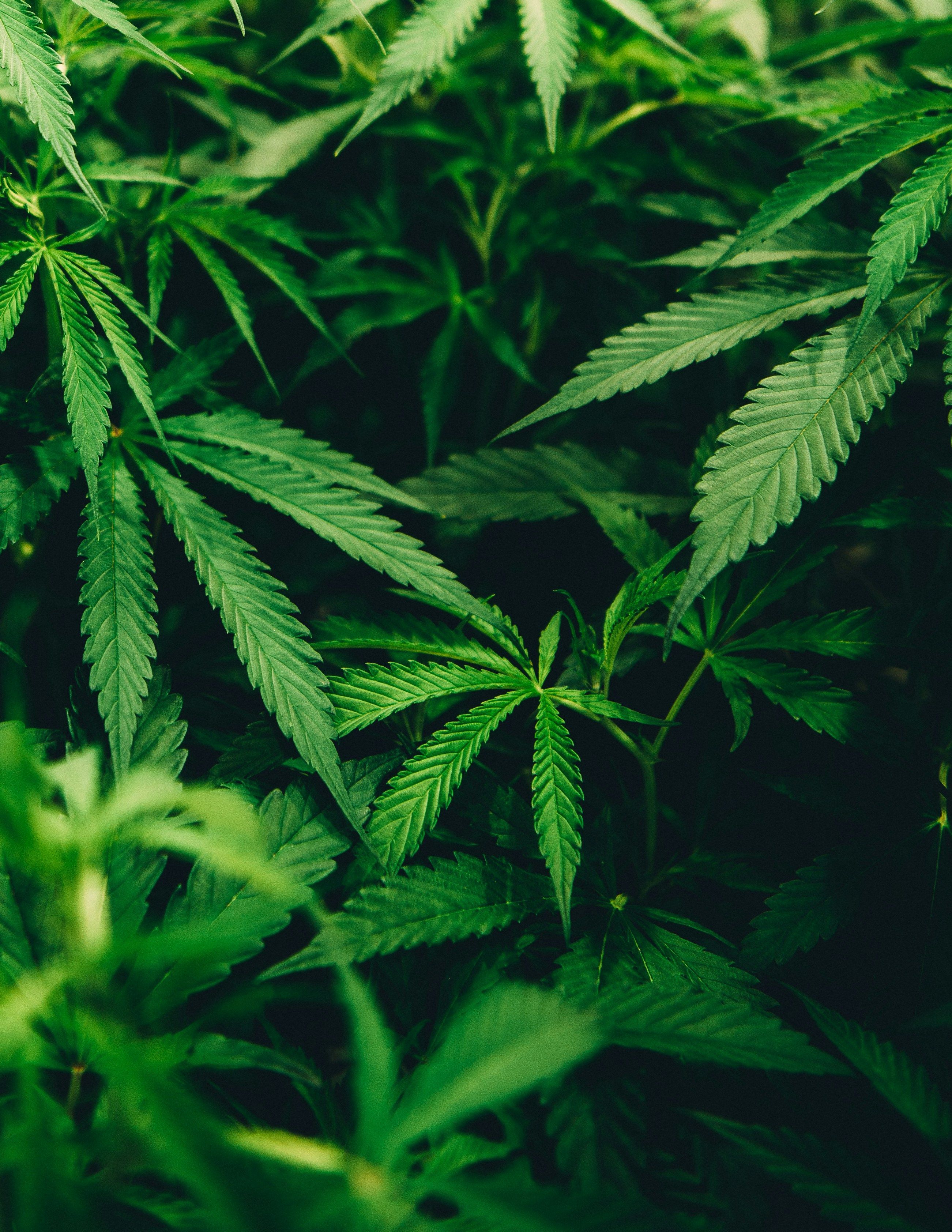NASDAQ | TSX: ACB
- Reiterates Reaching Adjusted EBITDA Profitability by December 31, 2022
- Reaffirms $150 to $170 Million in Annualized Cost Savings Achieved by December 31, 2022 ; $140 Million Realized to Date
- Strengthens Balance Sheet Through Accretive Debt Reduction of Approximately US$160 Million in 2022; Strong Cash Position of Approximately $393 million
- Remains #1 Canadian LP in High Margin Global Medical Cannabis Revenues
Aurora Cannabis Inc. (the "Company" or "Aurora" ) (NASDAQ: AC) | (TSX: ACB), the Canadian company defining the future of cannabinoids worldwide, today announced its financial and operational results for the fiscal first quarter ended September 30, 2022 . As a reminder, Fiscal 2023 will be comprised of three quarters, with the new fiscal year end being March 31, 2023 .
"We are quickly approaching our positive Adjusted EBITDA goal and are on track to achieve up to $170 million in annualized cost savings by December 31, 2022 , having already realized $140 million through Q1 2023. Our strengthened balance sheet and strong cash position has facilitated early repurchases of convertible debt of approximately US$160 million in 2022. Through profitable growth opportunities, particularly in our high-margin global medical cannabis business where we remain the #1 Canadian LP in revenues, disciplined capital deployment, and the completion of our cost structure rationalization, we are well-positioned to enhance the long-term value of our differentiated global cannabis company," stated Miguel Martin , Chief Executive Officer of Aurora.
"International medical cannabis net revenues were slightly uneven in Q1 2023, characteristic of rapidly developing markets. However, the long-term growth trajectory remains solid for our unique, portable, and profitable international medical program. We continue to identify areas of profitability and growth within the Canadian adult recreational segment, even in the face of a challenging environment, and are proud to have introduced a significant number of new products this fall that will benefit both our adult recreational customers and medical patients," he concluded.
First Quarter 2023 Highlights
(Unless otherwise stated, comparisons are made between fiscal Q1 2023, Q4 2022, and Q1 2022 results and are in Canadian dollars)
Medical Cannabis:
- Medical cannabis net revenue 1 was $31.6 million , a 14% decrease from the prior quarter and a 23% decrease from the prior year period, delivering 64% of Aurora's Q1 2023 consolidated net revenue 1 and 86% of Adjusted gross profit before fair value (FV) adjustments 1 .
- The decrease in net revenue 1 from Q4 was primarily attributable to timing of shipments into certain international markets during the prior quarter, with sales expected to normalize in Q2 2023. The decrease from the prior year quarter was driven by $7.9 million of sales to Israel and a strategic choice to shift our Canadian medical business towards the higher margin insured patient base.
- Adjusted gross margin before FV adjustments on medical cannabis net revenue 1 was 67% compared to 62% sequentially and 64% in the prior year period. The continued strength of the Company's medical adjusted gross margins 1 reflect the direct-to-patient model in Canada and sustained presence in the high margin international medical business. In addition, the Company reduced production costs by 4% while increasing production volumes by 11%, as compared to the prior quarter, which are direct impacts being realized from the asset consolidations completed over the past year.
Consumer Cannabis:
- Consumer cannabis net revenue 1 was $13.7 million , a 9% increase from the prior quarter and a 28% decrease from the prior year period.
- The increase in net revenue 1 from Q4 was primarily due to a full quarter of Thrive consumer cannabis net revenues 1 , partially offset by supply and ordering disruptions from a cyberattack at the Ontario Cannabis Store and store closures due to an employee strike at BC Cannabis Stores. The decrease from the prior year quarter was attributable to a reduction in the volumes sold of discount, low-margin brands, and replaced with premium higher-margin brands as Aurora management considers gross profit to be as important as revenue, and only participates in Canadian consumer market segments that allow for reasonably positive gross or contribution margins.
- Adjusted gross margin before FV adjustments on consumer cannabis net revenue 1 was 25% for the three months ended September 30, 2022 , compared to 26% in the prior quarter and 32% in the comparable prior year period. The decrease of 1% from Q4 2022 and 7% from Q1 2022 were due primarily to higher packaging volumes in Q1 2022, which reduced average cost of goods sold in that period.
Selling, General and Administrative ("SG&A"):
- SG&A, including Research and Development ("R&D"), was $43.8 million in Q1 2023 which includes $9.3 million of restructuring, non-recurring, and out-of-period costs, and $1.1 million in pre-revenue market development costs. Excluding the non-routine items noted above, SG&A and R&D continued to be well controlled and declining at $33.4 million during Q1 2023 versus $37.8 million in the prior quarter and $42.9 million in the prior year period, presented on a comparable basis. SG&A remains at the lowest level in four years.
| _____________________________ |
| 1 This press release includes certain non-GAAP financial measures, which are intended to supplement, not substitute for, comparable GAAP financial measures. See "Non-GAAP Measures" below for reconciliations of non-GAAP financial measures to GAAP financial measures. |
Consolidated:
- Total net revenue1 for fiscal Q1 2023 was $49.3 million , compared to $50.2 million in the previous quarter. Total cannabis net revenue 1 was $46.0 million , as compared to the prior quarter total cannabis net revenue 1 of $50.2 million and $60.1 million in the prior year period. The decrease was primarily driven by timing of shipments into certain international markets during the prior quarter and $7.9 million of sales to Israel in Q1 2022 and a strategic choice to shift our Canadian medical business towards the higher margin insured patient base.
- The Bevo business contributed $3.3 million of net revenues 1 , which represents just over one month of net revenues 1 . It is expected that the Bevo business will generate predictable revenues, with some seasonality, in the near-term. As Bevo repurposes the Aurora Sky facility, which is expected to greatly increase production capability, extend shipping range, and access new regional greenhouse demand in Canada and the United States , Bevo revenue is expected to increase over the longer term.
- Excluding the impact of the non-core bulk wholesales, adjusted gross margin before fair value adjustments on cannabis net revenue 1 for Q1 2023 remained strong and steady, and well above the industry average, at 54% compared to 52% in Q4 2022 and 54% in Q1 2022.
- Adjusted EBITDA 1 loss decreased to $8.7 million in Q1 2023 versus $11.6 million in Q4 2022 and $11.0 million in the prior year period. The decrease in Adjusted EBITDA loss, as compared to the prior quarter and the same period in the prior year is primarily attributable to reductions in SG&A and improvement in adjusted gross margin before fair value adjustments.
Net Loss:
Net loss for the three months ended September 30, 2022 was $51.9 million compared to $618.8 million in the prior quarter and $11.9 million for the same period in the prior year. The decrease in net loss of $566.9 million from the prior quarter was primarily due to $536.2 million in non-cash impairment charges recognized in Q4 2022. The increase in net loss of $40.0 million from the same period in the prior year was primarily due to a $35.7 million net unrealized fair value gain on derivative instruments recognized in Q1 2022, compared to a net unrealized loss of $0.9 million recognized in Q1 2023 and an increase in non-cash inventory and biological asset fair value impairment charges of $1.9 million mainly driven from management's change in intended use of certain excess bulk flower.
Fiscal Q2 2023 Expectations:
The Company expects to achieve its goal of reaching Adjusted EBITDA profitability by December 31, 2022 . Having resolved the negative impact of certain cultivar supply and wholesale distribution disruptions affecting our European medical and Canadian consumer business units respectively in fiscal Q1 2023, the Company expects cannabis revenue for fiscal Q2 2023 to be largely similar to fiscal Q4 2022. Fiscal Q2 2023 will represent the first full quarter contribution of revenue and positive Adjusted EBITDA from Bevo, albeit on a seasonally affected basis with the stronger contribution quarters expected from January to June and October to December being historically the weakest contribution quarter. Furthermore, the Company expects Adjusted Gross Margins to be consistent with fiscal Q1 2023 and expects to achieve its previously stated objective of a quarterly SG&A expense run rate below $30 million by December 31, 2022 .
Operational Efficiency Plan, Balance Sheet Strength, & Cash Use:
Aurora has previously identified annualized cash savings of up to $170 million under this transformation program by December 30, 2022 , split evenly between costs of goods sold ("COGS") and SG&A. Projected COGS savings include the repurposing of the Aurora Sky facility in Edmonton . These cash savings are reflected in our P&L either as they occur within SG&A savings, or as inventory is drawn down for production-related savings.
Aurora has one of the strongest balance sheets in the Canadian Cannabis industry with approximately $393 million of cash, including $58 million in restricted cash as of November 9, 2022 , and access to significant capacity under a base shelf prospectus filed on March 30, 2021 (the "2021 Shelf Prospectus"), including US$156.8 million remaining securities for sale under the 2021 at-the-market (ATM) program (the "ATM Program"). Subsequent to September 30, 2022 , the Company issued 23.7 million common shares under the ATM Program for gross proceeds $40.2 million (US $29.4 million ). At management's discretion, Aurora may sell shares under the ATM Program from time to time to be utilized for strategic purposes.
On October 7, 2022 , the Company repurchased a total of $31.5 million (US $23.0 million ) in principal amount of convertible senior notes due 2024 ("Senior Notes") at a total cost, including accrued interest, of $30.0 million (US $21.8 million ). The purpose of the transaction, which represents a repurchase of a portion of the Notes at a 5.45% discount to par value, was to reduce the Company's debt and annual cash interest costs. Annual cash interest savings from the repurchases of Notes made from Q3 2022 to date now total approximately $11.9 million ( US$8.7 million ).
The Company continues to materially improve cash use, as outlined in the following table:
| ($ thousands) | Q1 2023 | Q4 2022 | Q1 2022 |
| | | | |
| Cash, Opening (1) | $488,779 | $480,552 | $440,851 |
| | | | |
| Cash used in operations, including working capital | -$20,123 | -$22,491 | -$17,968 |
| Capital expenditures and investments, net of disposals and | $18 | -$7,168 | $3,053 |
| government grant income | |||
| Acquisition of business, net of cash acquired | -$38,790 | -$24,467 | $3,053 |
| Debt and interest payments | -$2,379 | -$147,580 | -$1,551 |
| Cash use | -$61,274 | -$201,706 | -$16,466 |
| | | | |
| Proceeds raised from sale of marketable securities and | - | - | - |
| investments in associates | |||
| Proceeds raised through debt | $842 | - | - |
| Proceeds (costs) raised through equity financing | -$119 | $209,933 | -$84 |
| Cash raised | $723 | $209,933 | -$84 |
| | | | |
| Cash, Ending (1) | $428,228 | $488,779 | $424,301 |
| | | | |
| (1) Includes restricted cash of $59.0M at Q1 2023, $51.0M at Q4 2022, and $51.5M at Q1 2022. |
Key Quarterly Financial and Operating Results
| ($ thousands, except Operational Results) | Q1 2023 | Q1 2022 | $ Change | % Change | Q4 2022 | $ Change | % Change |
| Financial Results | | | | | | | |
| Total net revenue (1)(2) | $49,263 | $60,108 | ($10,845) | (18 %) | $50,215 | ($952) | (2 %) |
| Medical cannabis net revenue (1)(2) | $31,565 | $40,984 | ($9,419) | (23 %) | $36,570 | ($5,005) | (14 %) |
| Consumer cannabis net revenue (1)(2) | $13,713 | $19,124 | ($5,411) | (28 %) | $12,638 | $1,075 | 9 % |
| Adjusted gross margin before FV adjustments on | 50 % | 54 % | N/A | (4 %) | 47 % | N/A | 3 % |
| total net revenue (2) | |||||||
| Adjusted gross margin before FV adjustments on | 54 % | 54 % | N/A | 0 % | 52 % | N/A | 2 % |
| core cannabis net revenue (2) | |||||||
| Adjusted gross margin before FV adjustments on | 67 % | 64 % | N/A | 3 % | 62 % | N/A | 5 % |
| medical cannabis net revenue (2) | |||||||
| Adjusted gross margin before FV adjustments on | 25 % | 32 % | N/A | (7 %) | 26 % | N/A | (1 %) |
| consumer cannabis net revenue (2) | |||||||
| SG&A expense (5) | $42,180 | $45,760 | ($3,580) | (8 %) | $46,890 | ($4,710) | (10 %) |
| R&D expense | $1,603 | $3,671 | ($2,068) | (56 %) | $2,456 | ($853) | (35 %) |
| Adjusted EBITDA (2)(5) | ($8,700) | ($11,036) | $2,336 | 21 % | ($11,564) | $2,864 | 25 % |
| | | | | | | | |
| Balance Sheet | | | | | | | |
| Working capital (6) | $514,193 | $532,612 | ($18,419) | (3 %) | $614,264 | ($100,071) | (16) % |
| Cannabis inventory and biological assets (3) | $121,776 | $139,103 | ($17,327) | (12 %) | $127,836 | ($6,060) | (5) % |
| Total assets | $1,169,927 | $2,560,316 | ($1,390,389) | (54 %) | $1,084,356 | $85,571 | 8 % |
| | | | | | | | |
| Operational Results – Cannabis | | | | | | | |
| Average net selling price of dried cannabis | $5.32 | $4.67 | $0.65 | 14 % | $5.10 | $0.22 | 4 % |
| excluding bulk sales (2) | |||||||
| Kilograms sold (4) | 12,165 | 12,484 | (319) | (3 %) | 13,130 | (965) | (7) % |
| (1) | Includes the impact of actual and expected product returns and price adjustments (Q1 2023 - $0.7 million; Q4 2022 - $1.8 million; Q1 2022 - $0.7 million). |
| (2) | This press release includes certain non-GAAP financial measures, which are intended to supplement, not substitute for, comparable GAAP financial measures. See "Non-GAAP Measures" below for reconciliations of non-GAAP financial measures to GAAP financial measures. |
| (3) | Represents total biological assets and cannabis inventory, exclusive of merchandise, accessories, supplies and consumables, and Bevo's and biological assets. |
| (4) | The kilograms sold is offset by the grams returned during the period. |
| (5) | Includes $9.3 million of restructuring related and non-recurring costs (Q4 2022 - $10.3 million, Q1 2022 - $5.4 million) |
| (6) | "Working capital" is defined as Current Assets less Current Liabilities as reported on the Consolidated Statements of Financial Position. |
Conference Call
Aurora will host a conference call today, Thursday, November 10, 2022 , to discuss these results. Miguel Martin, Chief Executive Officer, and Glen Ibbott , Chief Financial Officer, will host the call starting at 5:00 p.m. Eastern time | 3:00 p.m. Mountain Time . A question-and-answer session will follow management's presentation.
Conference Call Details
| DATE: | Thursday, November 10, 2022 |
| TIME: | 5:00 p.m. Eastern Time | 3:00 p.m. Mountain Time |
| WEBCAST: |
This weblink has also been posted to the Company's "Investor Info" link at https://investor.auroramj.com/ under "News & Events".
About Aurora
Aurora is a global leader in the cannabis industry, serving both the medical and consumer markets. Headquartered in Edmonton, Alberta , Aurora is a pioneer in global cannabis, dedicated to helping people improve their lives. The Company's adult-use brand portfolio includes Aurora Drift , San Rafael '71 , Daily Special , Whistler , Being and Greybeard , as well as CBD brands, Reliva and KG7 . Medical cannabis brands include MedReleaf, CanniMed, Aurora and Whistler Medical Marijuana Co. Aurora also has a controlling interest in Bevo Farms , North America's leading supplier of propagated agricultural plants. Driven by science and innovation, and with a focus on high-quality cannabis products, Aurora's brands continue to break through as industry leaders in the medical, performance, wellness and adult recreational markets wherever they are launched. Learn more at www.auroramj.com and follow us on Twitter and LinkedIn .
Aurora's common shares trade on the NASDAQ and TSX under the symbol "ACB".
Forward Looking Statements
This news release includes statements containing certain "forward-looking information" within the meaning of applicable securities law ("forward-looking statements"). Forward-looking statements are frequently characterized by words such as "plan", "continue", "expect", "project", "intend", "believe", "anticipate", "estimate", "may", "will", "potential", "proposed" and other similar words, or statements that certain events or conditions "may" or "will" occur. Forward-looking statements made in this news release include, but are not limited to, statements with respect to:
- pro forma measures including revenue, cash flow, Adjusted gross margin before fair value adjustments, and expected SG&A run-rates;
- the Company's ability to execute on its business transformation plan, and path and timing to achieve Adjusted EBITDA profitability;
- anticipated cost savings and planned cost efficiencies, including the execution of the Company's costs savings plan;
- future growth opportunities and the Company's long-term growth trajectory;
- the introduction of a new range of products to the market and associated benefits;
- expectations for fiscal Q2 2023, including with respect to revenue, adjusted gross margins and SG&A expense run rate;
- the acquisition of the controlling interest in Bevo and the expected impact on revenue, as well as the repurposing of the Aurora Sky facility and the expected associated increase in Bevo's production capacity and revenue; and
- future utilization of the ATM facility and the planned use of proceeds.
These forward-looking statements are only predictions. Forward looking information or statements contained in this news release have been developed based on assumptions management considers to be reasonable. Material factors or assumptions involved in developing forward-looking statements include, without limitation, publicly available information from governmental sources as well as from market research and industry analysis and on assumptions based on data and knowledge of this industry which the Company believes to be reasonable. Forward-looking statements are subject to a variety of risks, uncertainties and other factors that management believes to be relevant and reasonable in the circumstances could cause actual events, results, level of activity, performance, prospects, opportunities or achievements to differ materially from those projected in the forward-looking statements. These risks include, but are not limited to, the ability to retain key personnel, the ability to continue investing in infrastructure to support growth, the ability to obtain financing on acceptable terms, the continued quality of our products, customer experience and retention, the development of third party government and non-government consumer sales channels, management's estimates of consumer demand in Canada and in jurisdictions where the Company exports, expectations of future results and expenses, the risk of successful integration of acquired business and operations, management's estimation that SG&A will grow only in proportion of revenue growth, the ability to expand and maintain distribution capabilities, the impact of competition, the general impact of financial market conditions, the yield from cannabis growing operations, product demand, changes in prices of required commodities, competition, and the possibility for changes in laws, rules, and regulations in the industry, epidemics, pandemics or other public health crises, including the current outbreak of COVID-19, and other risks, uncertainties and factors set out under the heading "Risk Factors" in the Company's annual information form dated September 30, 2022 (the "AIF") and filed with Canadian securities regulators available on the Company's issuer profile on SEDAR at www.sedar.com and filed with and available on the SEC's website at www.sec.gov . The Company cautions that the list of risks, uncertainties and other factors described in the AIF is not exhaustive and other factors could also adversely affect its results. Readers are urged to consider the risks, uncertainties and assumptions carefully in evaluating the forward-looking statements and are cautioned not to place undue reliance on such information. The Company is under no obligation, and expressly disclaims any intention or obligation, to update or revise any forward-looking statements, whether as a result of new information, future events or otherwise, except as expressly required by applicable securities law.
Non-GAAP Measures
This news release contains reference to certain financial performance measures that are not recognized or defined under IFRS (termed "Non-GAAP Measures"). As a result, this data may not be comparable to data presented by other licensed producers of cannabis and cannabis companies. Non-GAAP Measures in this news release include "adjusted EBITDA", "net revenue", "adjusted gross profit before FV adjustments" and "adjusted gross margin before FV adjustments".
For an explanation of each measure to related comparable financial information presented in the consolidated financial statements prepared in accordance with IFRS, refer to the section of the Company's management's discussion and analysis for the years ended September 30, 2022 and 2021 (the "MD&A") entitled "Cautionary Statement Regarding Certain Non-GAAP Performance Measures", which is incorporated by reference into this news release. A copy of the MD&A is available under the Company's profile on SEDAR at www.sedar.com .
Non-GAAP Measures should be considered together with other data prepared in accordance with IFRS to enable investors to evaluate the Company's operating results, underlying performance and prospects in a manner similar to Aurora's management. Accordingly, the Non-GAAP Measures included in this news release are intended to provide additional information and should not be considered in isolation or as a substitute for measures of performance prepared in accordance with IFRS.
Net Revenue, Adjusted Gross Profit and Margin
Net revenue, adjusted gross profit before FV adjustments and adjusted gross margin before FV adjustments are Non-GAAP Measures and can be reconciled with gross profit and gross margin, the most directly comparable GAAP financial measures, respectively, as follows:
| ($ thousands) | Medical | Consumer | Total Core | Non-Core Bulk Cannabis | Bevo | Total |
| Three months ended September 30, 2022 | | | | | | |
| Gross revenue | 34,452 | 17,298 | 51,750 | 688 | 3,297 | 55,735 |
| Excise taxes | (2,887) | (3,585) | (6,472) | — | — | (6,472) |
| Net revenue | 31,565 | 13,713 | 45,278 | 688 | 3,297 | 49,263 |
| Non-recurring net revenue adjustments (1) | — | (752) | (752) | — | — | (752) |
| Adjusted net revenue | 31,565 | 12,961 | 44,526 | 688 | 3,297 | 48,511 |
| Cost of sales | (21,439) | (20,869) | (42,308) | (2,291) | (3,225) | (47,824) |
| Gross profit (loss) before FV adjustments | 10,126 | (7,908) | 2,218 | (1,603) | 72 | 687 |
| Depreciation | 2,093 | 1,936 | 4,029 | 190 | 443 | 4,662 |
| Inventory impairment, non-recurring, in cost of | 8,772 | 9,151 | 17,923 | 1,141 | — | 19,064 |
| sales (1) | ||||||
| Adjusted gross profit (loss) before FV | 20,991 | 3,179 | 24,170 | (272) | 515 | 24,413 |
| adjustments | ||||||
| | | | | | | |
| Adjusted gross margin before FV adjustments | 67 % | 25 % | 54 % | (40 %) | 16 % | 50 % |
| | | | | | | |
| Three months ended June 30, 2022 | | | | | | |
| Gross revenue | 39,553 | 16,994 | 56,547 | 1,007 | — | 57,554 |
| Excise taxes | (2,983) | (4,356) | (7,339) | — | — | (7,339) |
| Net revenue | 36,570 | 12,638 | 49,208 | 1,007 | — | 50,215 |
| Non-recurring revenue adjustments (1) | — | 1,023 | 1,023 | — | — | 1,023 |
| Adjusted net revenue | 36,570 | 13,661 | 50,231 | 1,007 | — | 51,238 |
| Cost of sales | (23,237) | (17,700) | (40,937) | (6,323) | — | (47,260) |
| Gross profit (loss) before FV adjustments | 13,333 | (4,039) | 9,294 | (5,316) | — | 3,978 |
| Depreciation | 3,489 | 2,506 | 5,995 | 816 | — | 6,811 |
| Inventory impairment, non-recurring, and out-of- | 5,747 | 5,118 | 10,865 | 2,230 | — | 13,095 |
| period adjustments in cost of sales (1) | ||||||
| Adjusted gross profit (loss) before FV | 22,569 | 3,585 | 26,154 | (2,270) | — | 23,884 |
| adjustments | ||||||
| | | | | | | |
| Adjusted gross margin before FV adjustments | 62 % | 26 % | 52 % | (225 %) | — % | 47 % |
| | | | | | | |
| Three months ended September 30, 2021 | | | | | | |
| Gross revenue | 43,910 | 26,016 | 69,926 | — | — | 69,926 |
| Excise taxes | (2,926) | (6,892) | (9,818) | — | — | (9,818) |
| Net revenue | 40,984 | 19,124 | 60,108 | — | — | 60,108 |
| Cost of sales | (17,810) | (15,553) | (33,363) | — | — | (33,363) |
| Gross profit before FV adjustments | 23,174 | 3,571 | 26,745 | — | — | 26,745 |
| Depreciation | 4,425 | 4,835 | 9,260 | — | — | 9,260 |
| Inventory impairment, non-recurring, and out-of- | (1,165) | (2,353) | (3,518) | — | — | (3,518) |
| period adjustments in cost of sales (1) | ||||||
| Adjusted gross profit before FV adjustments | 26,434 | 6,053 | 32,487 | — | — | 32,487 |
| | | | | | | |
| Adjusted gross margin before FV adjustments | 64 % | 32 % | 54 % | — % | — % | 54 % |
| (1) | Included in non-recurring and out-of-period adjustments are: Q1 2023 - $(0.8) million related to excise tax refunds and $(6.1) million related to non-recurring inventory adjustments resulting from facility shutdowns and product transfers, recorded in net revenues and cost of sales, respectively; Q4 2022 - $1.0 million and $(0.4) million related to expected returns on prior period revenues recorded in net revenues and cost of sales, respectively, $2.7 million related to a catch-up of prior period inventory adjustments, and $(0.5) million related to correction of prior quarter biological assets fair value inputs; Q1 2022 - $1.3 million related to prior period bonus accruals. |
Adjusted EBITDA
Adjusted EBITDA is a Non-GAAP Measure and can be reconciled with net income, the most directly comparable GAAP financial measure, as follows:
| ($ thousands) | Three months ended | ||
| September 30, | June 30, 2022 (5) | September 30, | |
| Net loss from continuing operations | (51,887) | (618,777) | (11,884) |
| Income tax expense (recovery) | (11,977) | (1,363) | (208) |
| Other income (expense) | 10,040 | 556,240 | (27,283) |
| Share-based compensation | 2,863 | 3,472 | 2,847 |
| Depreciation and amortization | 8,218 | 18,595 | 21,630 |
| Acquisition costs | 1,914 | 3,720 | 175 |
| Inventory and biological assets fair value and impairment adjustments | 28,284 | 9,880 | (3,511) |
| Business transformation and Restructuring related charges (1) | 7,719 | 6,812 | 472 |
| Out-of-period adjustments (2) | 467 | 1,833 | 5,658 |
| Non-recurring items (3) | (5,404) | 6,736 | — |
| Markets under development (4) | 1,063 | 1,288 | 1,068 |
| Adjusted EBITDA (5) | (8,700) | (11,564) | (11,036) |
| (1) | Business Transformation and Restructuring related charges includes costs related to closed facilities, legal contract termination fees, restructuring charges and severance associated with the business transformation plan. |
| (2) | Out-of-period adjustments reflect adjustments to net loss for the financial impact of transactions recorded in the current period that relate to prior periods. |
| (3) | Non-recurring items includes one-time excise tax refunds, non-core adjusted wholesale bulk margins, inventory count adjustments resulting from facility shutdowns and inter-site transfers, litigation and non-recurring project costs, and one-time prior period provisions on Reliva revenues. |
| (4) | Markets under development represents the adjustment for business operations focused on developing international markets prior to commercialization. |
| (5) | Prior period comparatives were recast to include the adjustments for markets under development and business transformation costs to be comparable to the current period presentation. |
![]() View original content to download multimedia: https://www.prnewswire.com/news-releases/aurora-cannabis-announces-fiscal-2023-first-quarter-results-301674911.html
View original content to download multimedia: https://www.prnewswire.com/news-releases/aurora-cannabis-announces-fiscal-2023-first-quarter-results-301674911.html
SOURCE Aurora Cannabis Inc.

![]() View original content to download multimedia: https://www.newswire.ca/en/releases/archive/November2022/10/c6787.html
View original content to download multimedia: https://www.newswire.ca/en/releases/archive/November2022/10/c6787.html






